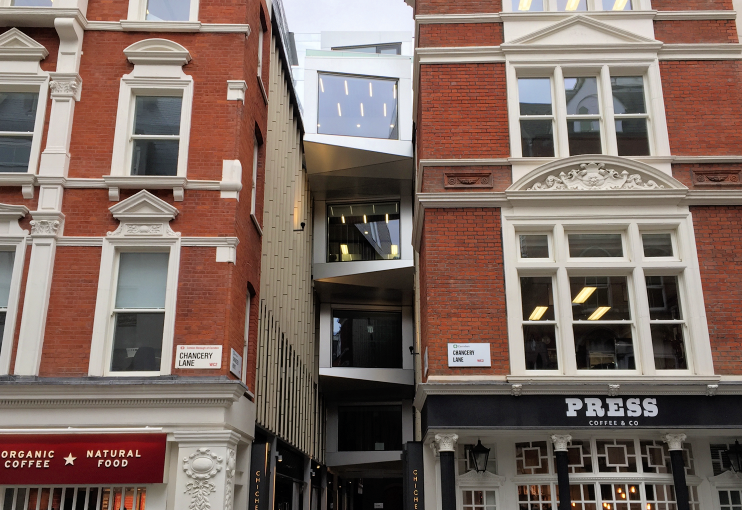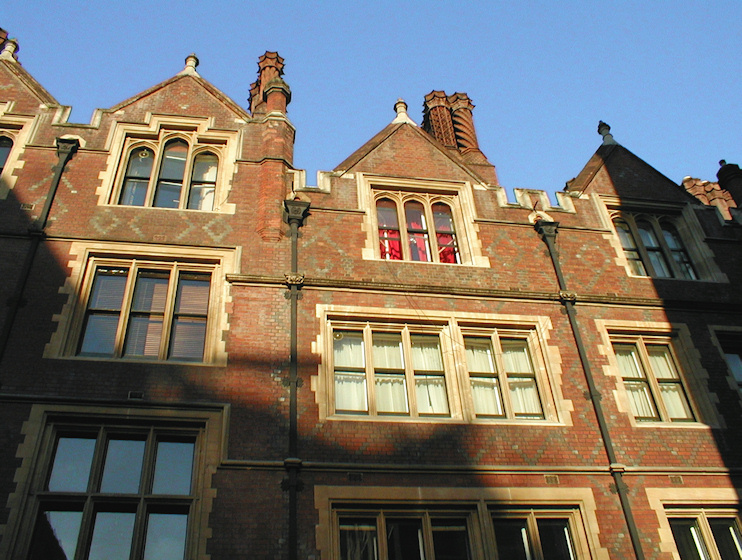Chancery Lane
Chancery Lane, City/Camden/Westminster
A focal thoroughfare for the London legal profession, running between Fleet Street and High Holborn

Soon after the middle of the 12th century the Knights Templar created New Street as a route between their old headquarters in Holborn and their ‘New Temple’.
In 1232 Henry III founded the Domus Conversorum on New Street, which occupies a bleak place in the history of Jewish persecution. It was England’s principal house of indoctrination, where Jews who had been coerced into renouncing their faith were interned away from their community and instructed in the Christian religion.
Henry also closed the schools of law in the City, an act which led to the foundation of Inns of Chancery (a contraction of ‘Chancellery’), where legal students served apprenticeships.
In 1377 Edward III gifted the former Domus Conversorum to the Keeper (later Master) of the Rolls of the Court of Chancery and by the early 15th century New Street was becoming known as Chancery Lane.
The Inns of Chancery ceased to serve an educational role after the Civil War and thereafter functioned as professional clubs.
By the 1770s the lane had taken on a decidedly urban character and it retains many Georgian buildings, which form part of the Chancery Lane conservation area. With the steady rise of the legal profession, solicitors took premises here, as did suppliers such as wig makers, strongbox makers, law stationers and booksellers.

The Inns of Chancery closed one by one and some of their buildings were replaced by public institutions with legal connections.
The Public Record Office was built in stages during the second half of the 19th century. After the office moved to Kew, its building was skilfully adapted to house King’s College’s Maughan Library.
The Patent Office was established in 1852 and based in Southampton Buildings, where it shared accommodation with the Secretaries of Bankrupts and Lunatics. The office expanded to fill several neighbouring buildings and remained on Chancery Lane until the late 1990s.
The Law Society of England and Wales is headquartered at 113 Chancery Lane. Chancery Lane is also home to the Official Solicitor and Public Trustee.
Chancery Lane is a conservation area and little redevelopment is allowed here but a recent scheme at 40 Chancery Lane has replaced a series of 1950s and 60s buildings with a tasteful set of linked office blocks that have been let to Publicis Groupe, the French marketing consortium that owns the Saatchi & Saatchi advertising agency.
Also, the passageway called Chichester Rents was revamped in 2014–15 with new retail units at ground floor level (mainly for food purveyors) and additional office space above, as shown in the photo at the top.*
The London Silver Vaults are an underground storehouse for antique and modern silverware. They are open to the public and 30 silver specialists sell their wares here.
‘Long Chanc’ry-lane retentive rolls the sound / And courts to courts return it round and round;’ wrote Alexander Pope in The Dunciad.
Izaak Walton, the ‘father of angling’, worked as linen draper in Chancery Lane from 1627 to 1644.
